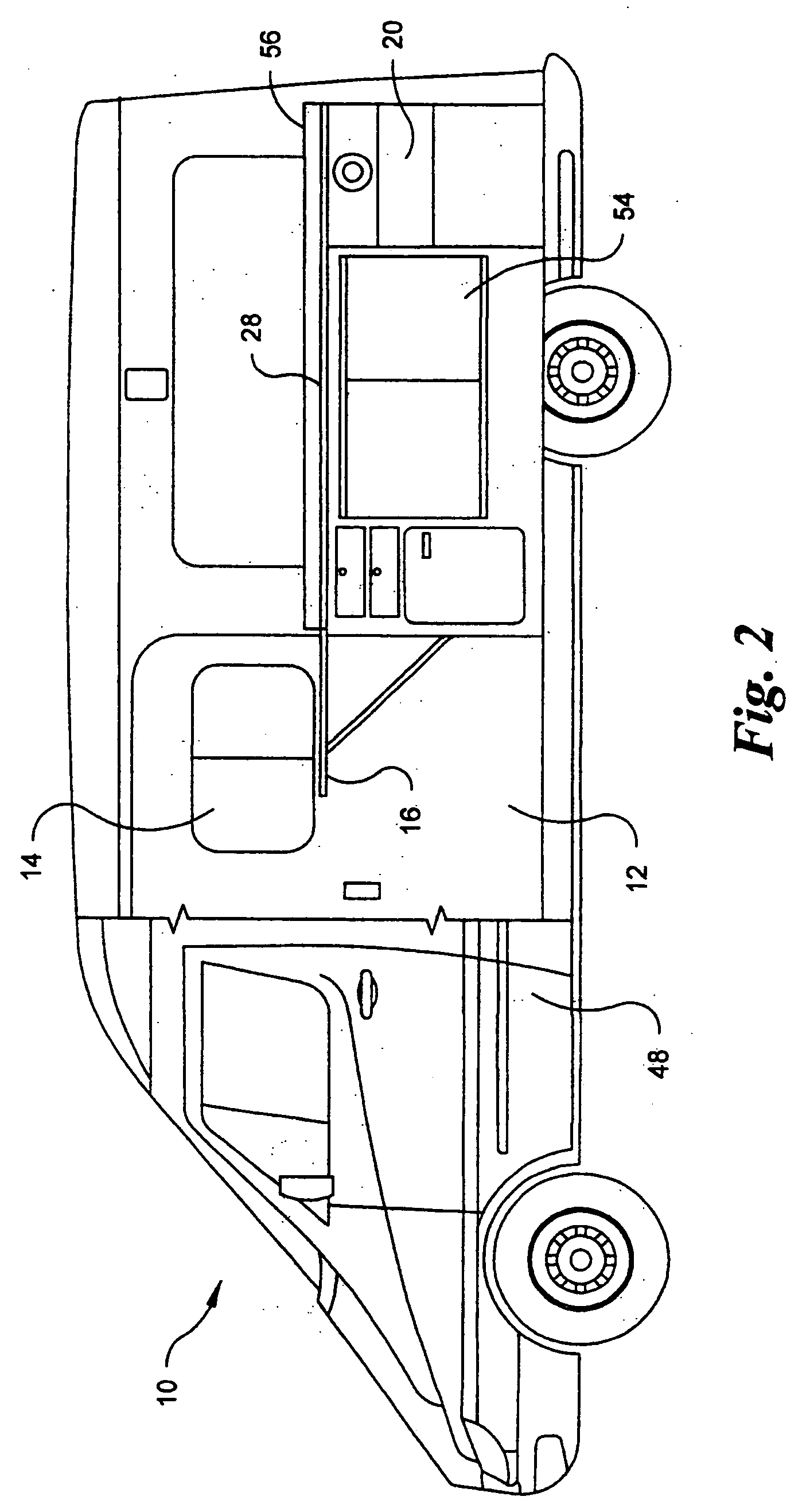Mobile intra-operative microscopic diagnosis laboratory
a microscopic diagnosis and laboratory technology, applied in the field of mobile laboratory to provide intra-operative microscopic diagnosis, can solve the problems that none of the operations or mobile medical vehicles available is capable of providing intra-operative microscopic diagnosis, and achieve the effects of saving space, improving utilization of resources, and earning the majority of incom
- Summary
- Abstract
- Description
- Claims
- Application Information
AI Technical Summary
Benefits of technology
Problems solved by technology
Method used
Image
Examples
Embodiment Construction
[0021]FIG. 1 is a top view schematic of the inside of the Mobile Intra-Operative Microscopic Diagnosis Laboratory. Shown in FIG. 1 is a van 10 which is the most likely means for transporting the laboratory. The best way of explaining the schematic is to describe the process that the physician receiving the sample would go through in providing the diagnosis. The sample is typically first received through the window 14 which is in the upper portion of the sliding door 12. A fold over counter top 16 is available to be utilized when the sample is received. The first step after receiving the sample is the grossing step where the sample is measured, described and inked typically at the fold over counter top or grossing station 16, which is all dictated by the physician. Next, the sample is placed on the chuck 82, shown in FIG. 4, which is part of the cryostat 24 and then the chuck 82 is placed inside the cryostat 24. After the sample is frozen within the cryostat 24, microscopic sections ...
PUM
| Property | Measurement | Unit |
|---|---|---|
| thick | aaaaa | aaaaa |
| power | aaaaa | aaaaa |
| freezing | aaaaa | aaaaa |
Abstract
Description
Claims
Application Information
 Login to View More
Login to View More - R&D
- Intellectual Property
- Life Sciences
- Materials
- Tech Scout
- Unparalleled Data Quality
- Higher Quality Content
- 60% Fewer Hallucinations
Browse by: Latest US Patents, China's latest patents, Technical Efficacy Thesaurus, Application Domain, Technology Topic, Popular Technical Reports.
© 2025 PatSnap. All rights reserved.Legal|Privacy policy|Modern Slavery Act Transparency Statement|Sitemap|About US| Contact US: help@patsnap.com



